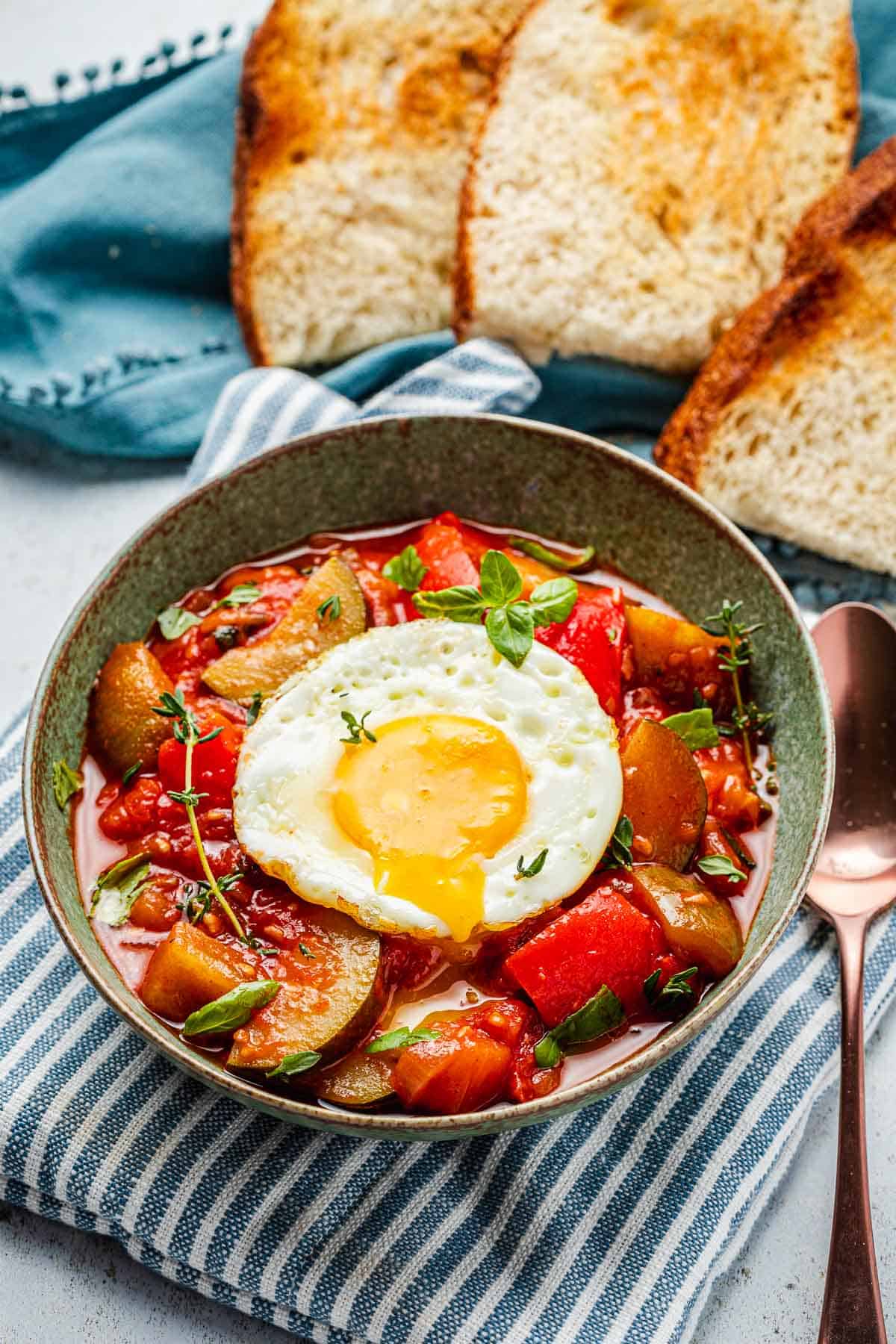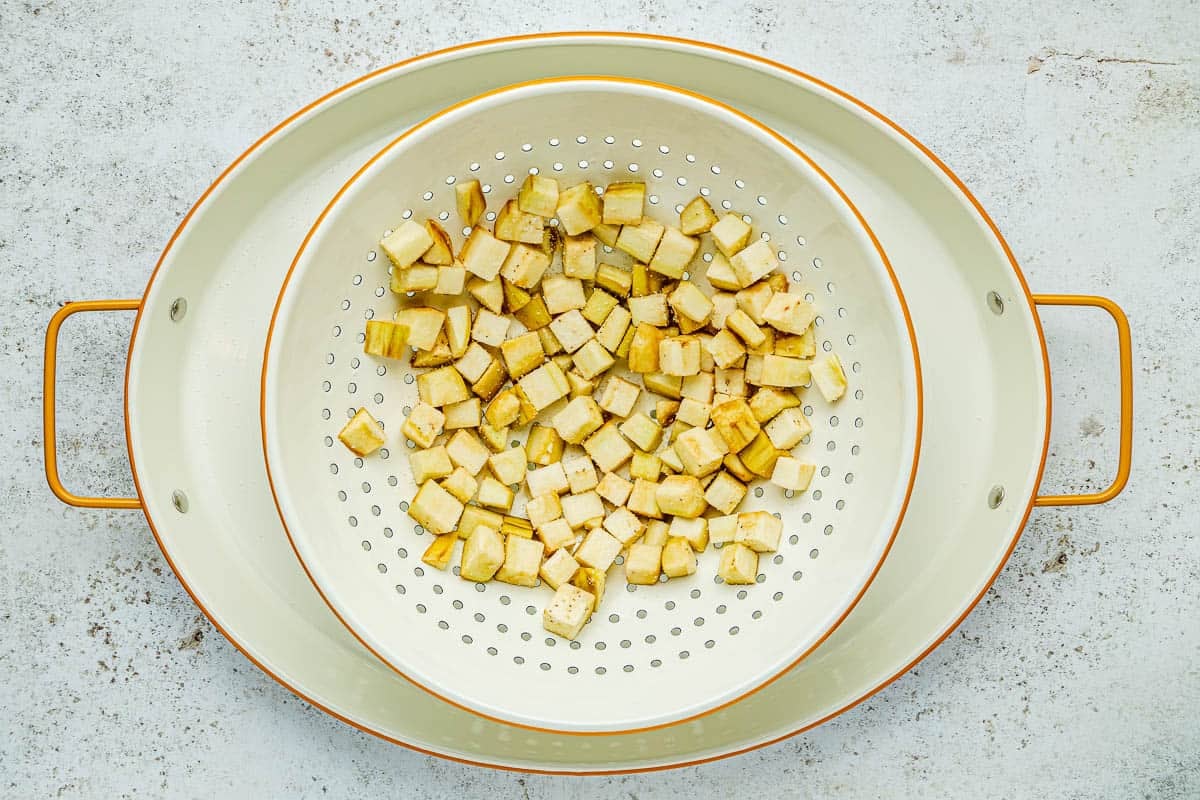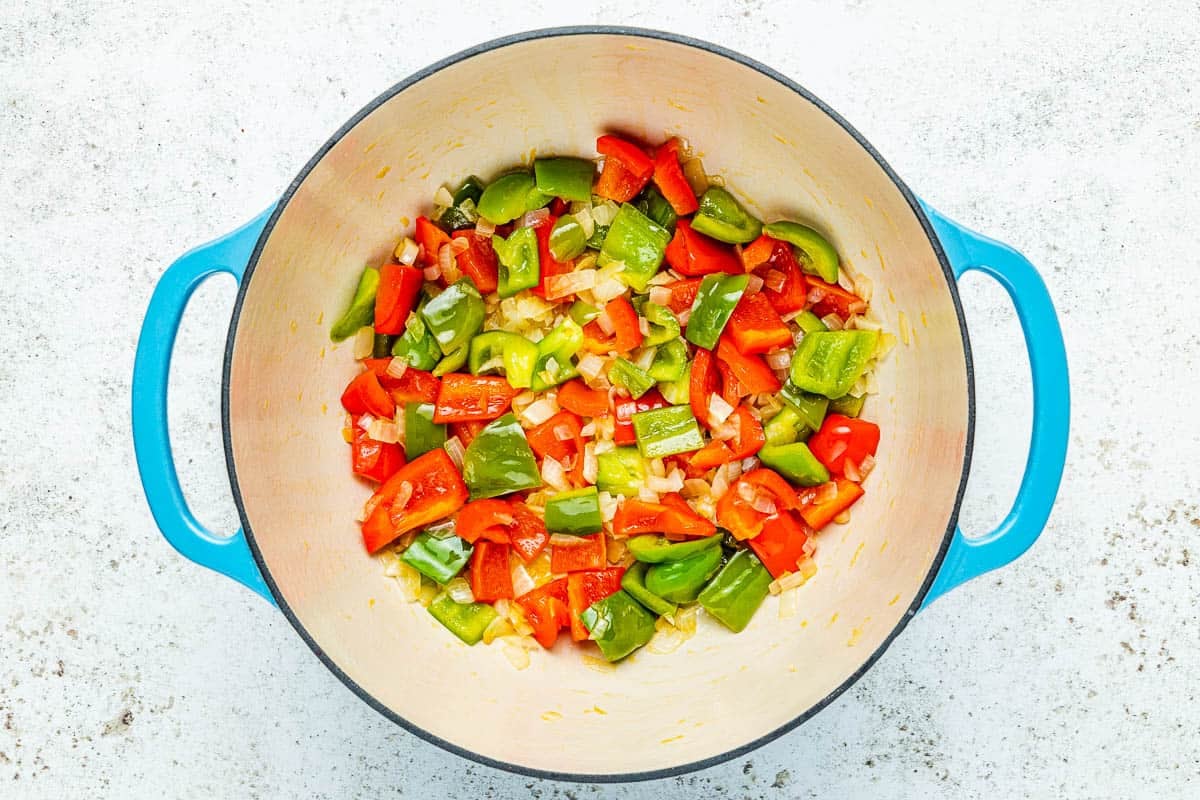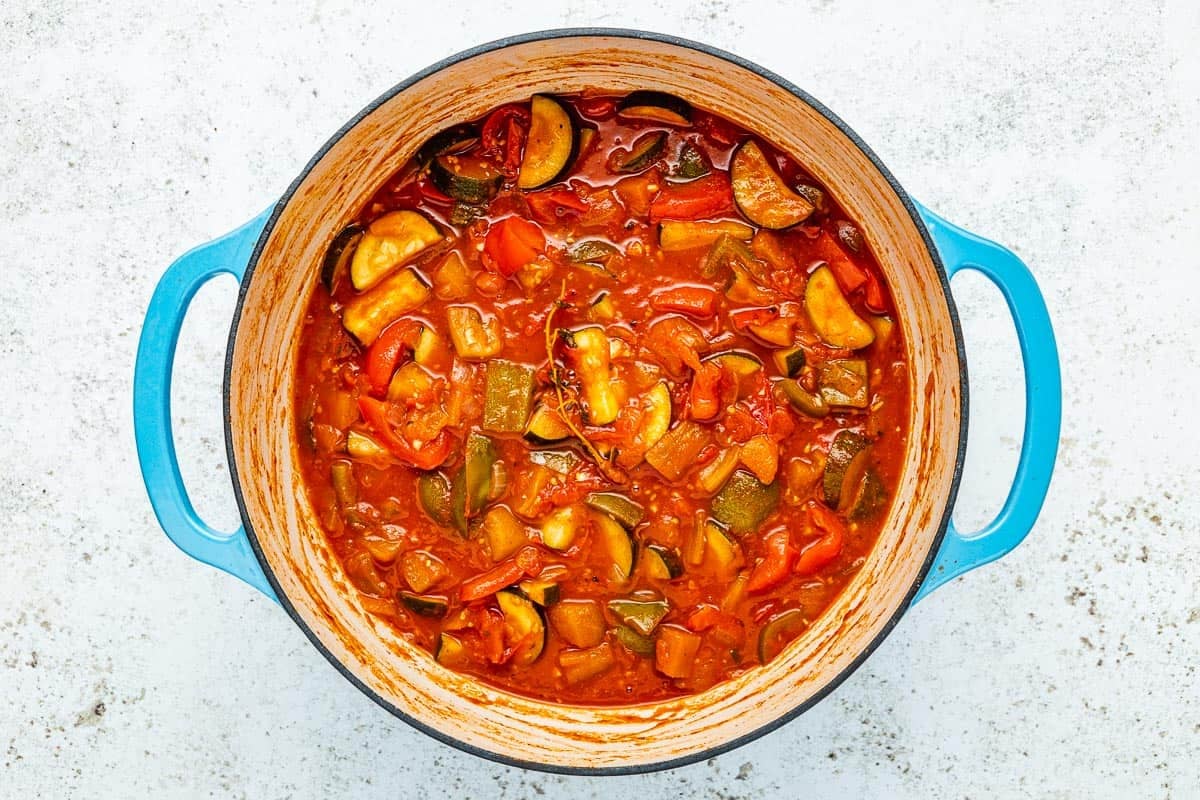This easy ratatouille recipe is my take on the classic vegetable stew from Provence, France. Tomato, eggplant, zucchini, and bell peppers simmer with aromatics until they soften, release their juices, and become jammy and delicious.
Ratatouille recipes traditionally call for a long, slow simmer. In this weeknight-friendly version, I’ve adapted the classic recipe using a very simple technique.
I quickly boil the stew for 5 minutes, then I gently simmer until the vegetables are nice and soft but still maintain their shape. As an added bonus, you only have to wash one pot! What’s best: it’s even better the next day. Freeze a big batch to brighten your January with summer’s best flavors. Or, enjoy this healthy vegetarian, dairy- and gluten-free stew for breakfast, lunch, and dinner all week long. Like a good pasta salad or quiche, ratatouille is famous for its flexibility. Serve it hot, cold, for breakfast, lunch, dinner, at a picnic, as a main, as a side, topped with a fried egg or on its own.
Ratatouille, pronounced “rat-uh-too-ee,” came long before the totally heartwarming–some might say life-changing–animated movie. The flavorful and vibrant vegetable stew has deep roots in the culinary traditions of Provence, a region in the south of France. Renowned for its rustic simplicity and ability to capture the essence of summer in each bite, it showcases the bountiful produce of the Mediterranean. The origins of ratatouille can be traced back to the 18th century. Considered a peasant dish, it was invented as a practical way to use an abundance of seasonal vegetables grown in local gardens. Over time, ratatouille became a celebrated symbol of Provençal cuisine. Its popularity spread throughout France and eventually across the globe. Ratatouille represents the essence of the Mediterranean diet, which emphasizes fresh, seasonal ingredients and the joy of communal dining. Whether served as a main course or a side dish, ratatouille stands as a testament to the beauty of simplicity, the celebration of seasonal ingredients, and the ability of food to bring people from all walks of life together around a table!
Like my Roasted Vegetable Salad, this easy Ratatouille recipe uses classic Mediterranean produce. Thankfully, the same ingredients are easy to find in just about any grocery store. The vegetable stew is best in the warmer months when eggplant, tomatoes, and zucchini are at their most vibrant. Consider doubling and freezing if you have a large enough pot.

Tips for Making the Best Ratatouille
Cooking ratatouille in one pot is simple, easy, and totally feasible on a given weeknight. Three important things to keep in mind before you get started:
- How to chop your vegetables? Some recipes call for small-dice, while others call for chopping the ingredients in large chunks for a more rustic feel. Its a matter of personal preference. I tend to chop my vegetables in 1-inch pieces so they get nice and velvety without losing all of their natural texture. To add more interest, I cut the zucchini or summer squash into half moons. The key is to make the vegetables all about the same size so they cook at the same rate.
- Salt the eggplant. Salting the eggplant may be an optional step but I highly recommend it. The salt helps in three ways: First, the eggplant sweats out any bitterness (yes, I know not all eggplants are bitter). Second, it helps break down its spongy texture. Finally, it helps it cook more quickly, saving us from overcooking the other vegetables while we wait on the eggplant.
- For the best flavor, rest in the warm pot for 1 hour before serving. This will allow the flavors to settle and deepen beautifully. You do not need to heat before serving, ratatouille is great just warm.

How to Make Ratatouille
Like my winter vegetable stew, this easy ratatouille recipe builds flavor quickly and easily using just one pot. Keep an eye on the vegetables as they cook: you want them to be soft and delicate, but not mushy.
- Salt the eggplant: Peel 1 pound of eggplant, removing the peel entirely or in a striped pattern for a more rustic look. Cut into 1-inch pieces and place in a large colander in your sink. When ready, sprinkle generously with salt and leave for 20 minutes as you prep the remaining ingredients. When the eggplant has sweated out its bitterness, pat dry with paper towels.

- Prep the produce: Meanwhile, finely chop 1 yellow onion. Slice 2 bell peppers into 1-inch pieces. Mince 6 garlic cloves (see our how to mince garlic guide for tips). Chop 2 pounds of tomatoes, saving their juice as you go. Slice 2 zucchini into ½-inch half moons.
- Cook the onion and peppers: In a large heavy pot, heat 2 tablespoons of olive oil over medium heat. When the oil is shimmering, add the onions. Cook, stirring regularly, until they’re translucent (about 5 minutes). Add the bell peppers and cook until softened, about 4 minutes more.

- Add the remaining veggies: Add the garlic, tomatoes and their juice, zucchini, and eggplant. Stir in ½ cup of red wine and 2 sprigs of thyme. Season with a pinch of salt and 1 teaspoon each of black pepper, paprika, and dried rosemary.
- Boil then simmer: Raise the heat to medium-high and bring to a boil for 5 minutes, stirring once or twice. Turn the heat to low, then cover and simmer until the vegetables are soft and the liquid has thickened, about 20 minutes.

- Season: Remove the ratatouille from the heat, taste, and adjust salt to your liking. Add the sherry vinegar and a generous drizzle of olive oil. Top with fresh basil.
- Serve: If you have time, cover and allow the ratatouille to rest in its warm pot for 1 hour or so before serving. When you’re ready to serve, ladle into bowls. Optionally, top each with a sunny side up egg and pass around some crusty bread for dipping. Enjoy warm, at room temperature, cold, any which way!
Should eggplant be peeled when making ratatouille?
Do I need to Peel eggplant to make Ratatouille?
You do not need to peel your eggplant to make ratatouille. I don’t. Nor do I salt it. However, if you have a family member that dislikes eggplant, I would peel it before adding it to the other ingredients. The removal of the skin will allow the eggplant to melt into the sauce, effectively hiding it from suspicious or picky eaters.
Should eggplant be peeled prior to cooking?
Anthocyanins present in the skin of eggplant rise serum antioxidant volume and support against heart illness and hyperlipidemia by decreasing LDL (low-density lipoprotein). Therefore, to have all of the health benefits of this vegetable, it should not be peeled.
Can you use peeled tomatoes for Ratatouille?
Ratatouille is traditionally a summer dish made when all the vegetables can be freshly harvested and have the best possible taste, so it’s preferable to use fresh, ripe and sweet tomatoes. However, even though fresh tomatoes have preference, it is perfectly possible to use a can of peeled tomatoes.
Can You reheat Ina Garten Ratatouille?
The Ratatouille should be reheated to 165°F before serving. Microwave your Ina Garten Ratatouille for 4 minutes on high or 4 minutes on low. Reheat the remaining Ina Garten Ratatouillein in the air fryer for 5 minutes at 350°F, covered in foil. Remove the foil and cook for another 2 minutes, or until well cooked.
